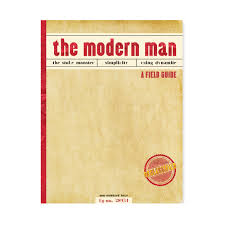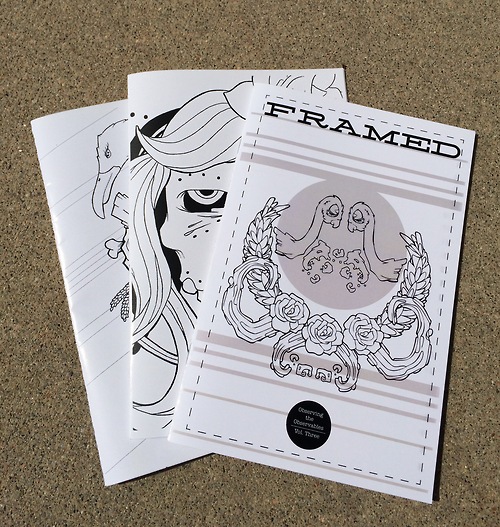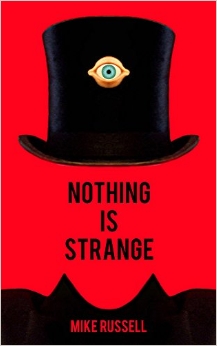The Modern Man: A Field Guide by The Royal We Is Us
– Reviewed by Elanor Clarke –
Where do I even start? How about with – what have I just read?
Described as a zine, The Modern Man: A Field Guide consists of 14 pages of odd (if we include the cover and decorative front and back pages), put together by Bradley E. Robinson of the creative collective at The Royal We Is Us.
It’s pretty, that much is for sure. The design of each page has a cool collage combined with glossy article feel, with factoids (some of which are not, in fact, facts) in little cutout boxes on thematic pages such as ‘feed’ ‘comrades’ and ‘dynamite’. The use of colour is striking, and as a piece of design work it, well, works.
Then we fall down. The words – because that’s what we’re here for – don’t really cut it in the same way. In each section, the ‘facts’ are part fact, part pseudo-fact, part comedy commentary, and occasionally just weird things the author made up. This, along with the imagery used, gives the whole thing a rather surreal nature. Take, for example, ‘feed’. This section contains a basic recipe for chocolate chip cookies, listed as a note. The two other text sections talk about the ‘stoke monster’ and being a beast. (The stoke monster is, apparently, hard to find).
To call this a piece of fiction is to use the word in a very loose sense. Though a good proportion of the text has indeed been made up, making it fiction of a sort, it is certainly more of a concept-based design project than a writing project. It is funny in places, but mostly just made me question why these snippets had all been put together in the first place. Love, for example, gives us advice verging on the nonsensical, followed by the fact that the heart beats 100,000 times a day, and that the first ever love poem is Sumerian, written on a clay tablet. The section on dynamite, too, gives us some facts but its key message is found in the ‘note when handling explosive material’, that being ‘it’s a game changer’.
We are, in a sense, being given a sneak peek inside someone’s logic – the things they place together in their mind have been placed together on paper. We are even given an ‘emergency medical kit’ of cutouts relating to the sections, to help steer us through life. The cookie, axe, heart self-destruct button and dynamite would all, surely, come in handy in some dire situation…
All in all, this seems to be a worthwhile project in terms of linking words with design, but as to whether it is a piece of writing someone would read – I’m not so sure. I’m more inclined to call this a piece of design, with text forming an integral part of it. As such, whether or not I’d recommend it depends entirely on whether one has an interest in the visual arts. If not, this piece may not be for you.




